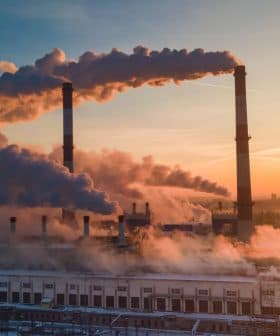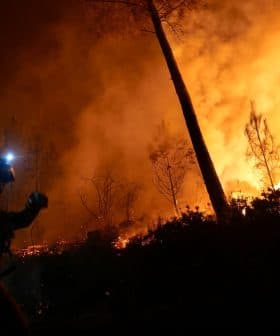WMO: Next Five Years Will Be Hotter than The Last Five
The World Meteorological Organization (WMO) report indicates that limiting global surface temperature rise to 1.5 ºC above pre-industrial levels may be more challenging than previously believed, with a 48 percent chance of temperatures reaching 1.7 ºC in the next five years. The report also forecasts changing precipitation patterns in various regions and warns that exceeding the 1.5 ºC threshold would result in increasingly harmful climate impacts.
A new report from the World Meteorological Organization (WMO) showed that curtailing global surface temperature rise by 1.5 ºC above the pre-industrial average may be more difficult than previously thought.
The WMO has estimated a 48 percent chance average global temperatures will rise by 1.7 ºC in the next half-decade.
We are getting measurably closer to temporarily reaching the lower target of the Paris Agreement on climate change… an indicator of the point at which climate impacts will become increasingly harmful for people and indeed the entire planet.
According to the organization, there is also a 93 percent chance that one of the years between 2022 and 2026 will become the warmest year on record.
The United Kingdom’s Meteorological Office, which contributed to the report, estimated only a 10 percent likelihood for the 1.5 °C threshold to be crossed between 2017 and 2021.
See Also:Record Heatwave and Drought in Pakistan Threaten Crops and Olive FarmingIn its Global Annual to Decadal Climate report update, the WMO explained that there is also a 93 percent chance that the next five years will record higher average temperatures than the previous five years.
The organization also noted that average annual temperatures would accelerate more sharply in the Arctic than in the rest of the world.
The WMO also predicted that rainfall patterns would continue to change in certain regions.
“Predicted precipitation patterns for 2022 compared to the 1991 to 2020 average suggest an increased chance of drier conditions over southwestern Europe and southwestern North America, and wetter conditions in northern Europe, the Sahel, north-east Brazil and Australia,” the report authors wrote.
However, the WMO warned that its forecast is not an official estimate for any region or nation but guidance for regional and national climate and weather research centers.
Still, those predictions seemed to confirm how regions such as Spain, Italy and Portugal, where most European olive oil production takes place, might be forced to cope with worsening climate conditions.
Such estimates come on the heels of previous research that found climate change will significantly impact the Mediterranean basin.
A study published by Nature showed how the weakening Gulf Stream might alter the stability of the conditions that have helped make the region the cradle of olive oil production.
Mediterranean farmers have grown their crops for centuries. Spain and Italy are considered the first places destined to experience new and unpredictable climate events that researchers believe might rapidly expand to the whole Mediterranean basin. Both countries are coping with long-lasting droughts and desertification.
The WMO report also forecasted drier conditions in the Amazon basin, while wetter patterns are expected for 2022 to 2026 in the Sahel, northern Europe, Alaska and northern Siberia.
“Predicted precipitation patterns for the November to March 2022/23 to 2026/27 average, compared to the 1991 to 2020 average, suggest increased precipitation in the tropics and reduced precipitation in the subtropics, consistent with the patterns expected from climate warming,” the WMO report authors wrote.
“This study shows… that we are getting measurably closer to temporarily reaching the lower target of the Paris Agreement on climate change,” WMO Secretary-General Petteri Taalas wrote. “The 1.5 °C figure is not some random statistic. It is rather an indicator of the point at which climate impacts will become increasingly harmful for people and indeed the entire planet.”
“For as long as we continue to emit greenhouse gases, temperatures will continue to rise,” he added. “And alongside that, our oceans will continue to become warmer and more acidic, sea ice and glaciers will continue to melt, sea level will continue to rise and our weather will become more extreme. Arctic warming is disproportionately high and what happens in the Arctic affects all of us.”
The Paris Agreement focused on preventing the global surface temperature from rising more than 1.5 ºC compared to the average temperature from 1850 to 1990.
“A single year of exceedance above 1.5 ºC does not mean we have breached the iconic threshold of the Paris Agreement, but it does reveal that we are edging ever closer to a situation where 1.5 ºC could be exceeded for an extended period,” said Leon Hermanson, a researcher at the UK Met Office and co-author of the WMO report.









